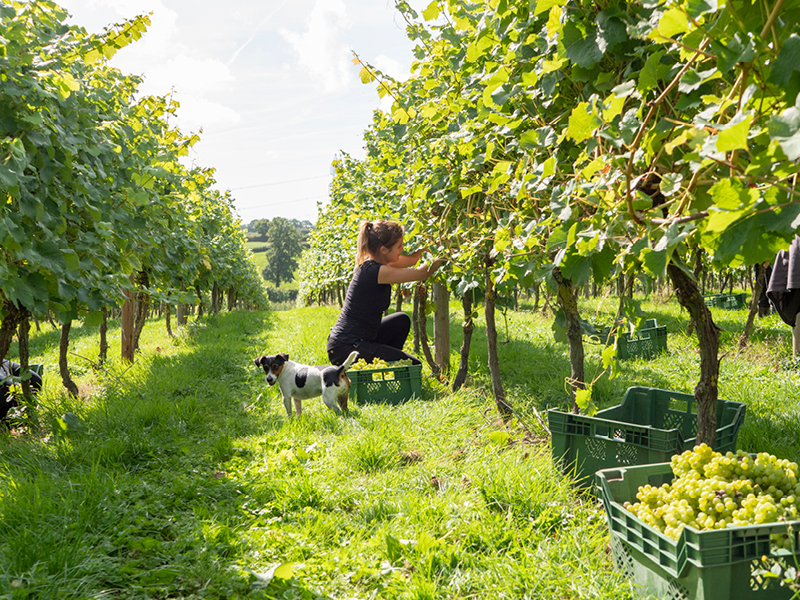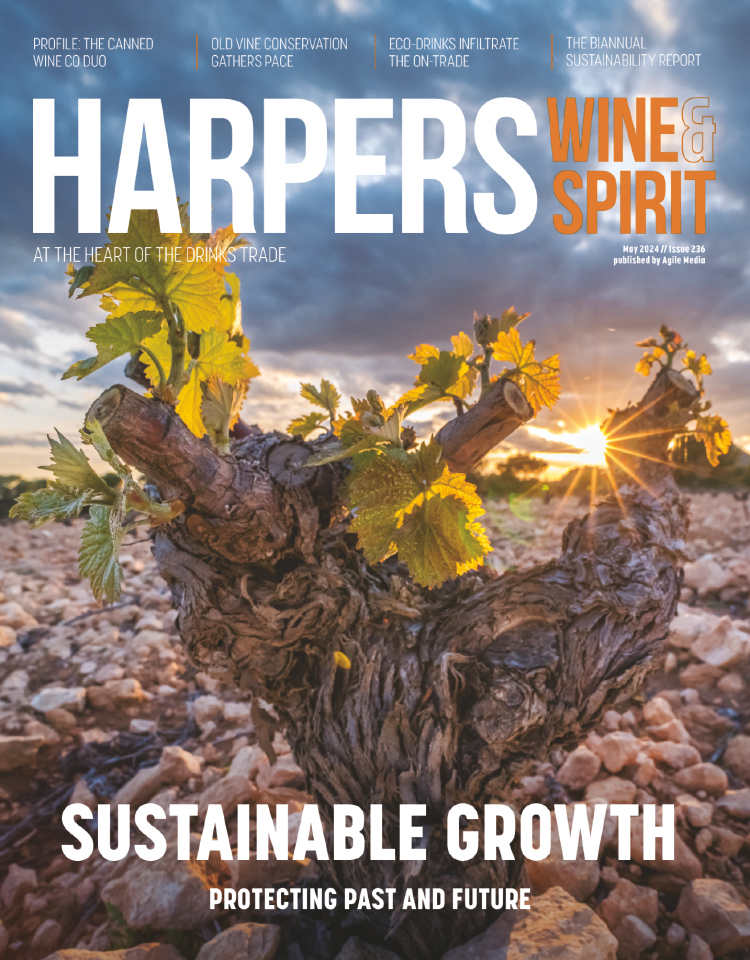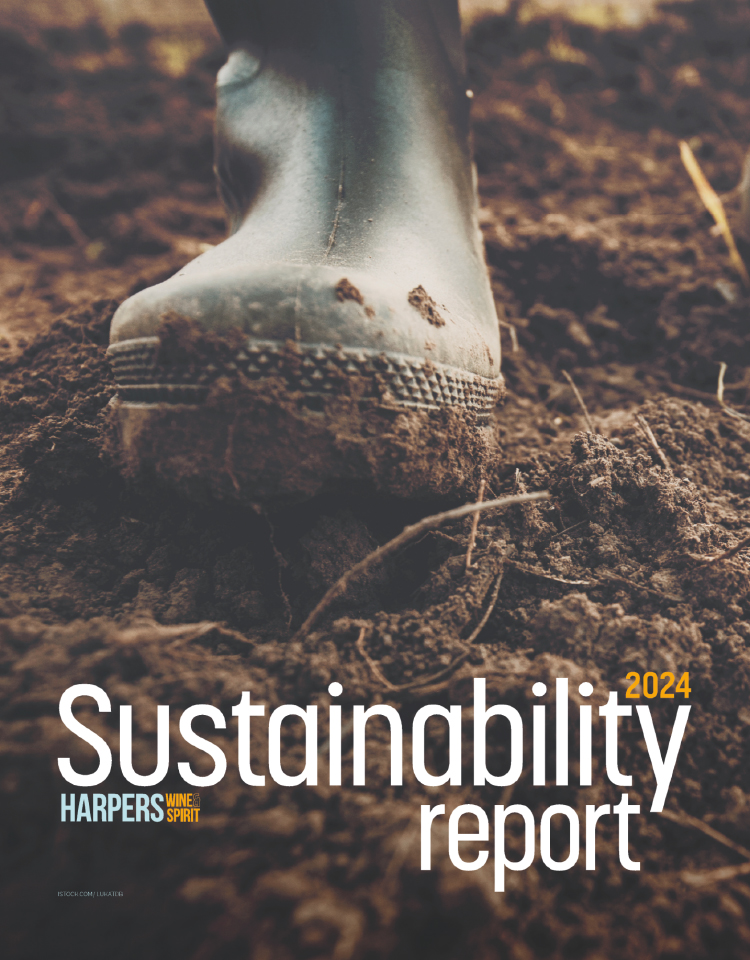
English bumper crop highlights capacity conundrum
A bumper crop has led to winemakers turning down grapes from growers, highlighting English wine’s capacity conundrum: there’s an insufficient number of wineries to produce wine from the exponential growth of vineyards.
Malcolm Walker, owner of wine contract winemaking company, Itasca, in Hampshire, said this harvest he turned down between 50 and 100 tonnes of grapes. Meanwhile, Henry Sugden, CEO of contract winemaking company Defined Wine, in Kent, said that despite its enlargement this year, his facility’s capacity was unexpectedly full, with tonnage increasing by between 30 and 40%.
“Existing clients have bought in more grapes, in one case, we were expecting five tonnes of Divico grapes, but eight tonnes were bought in,” said Sugden.
• Read more: Gusbourne follows English wine boom with record harvest
Walker says some of the smaller growers were ill-prepared in terms of where their wine would be made.
“There was a lot of fruit for sale and yes, some will not have found a home. Same as in 2018,” said English wine expert, Stephen Skelton. “It has been a bit of a wake-up call for those growers who don’t have fixed contracts – not such a bad thing,” he said.
Talk of a glut of English wine first emerged during the big harvest of 2018. Over the past five years, WineGB says the English and Welsh vineyard area has increased by 74% to more than 3,928ha. Last year 12m bottles were produced, but sales fell from 9.3m bottles in 2021, to 8m bottles in 2022, according to Wine GB.
Inadequate post-Brexit funding
There are more than 800 vineyards, but just over 200 wineries in Britain. To build capacity and tourism facilities, numerous English wine producers have tapped into single-payment EU funds, which no longer exist. EU rural development funds once accounted for as much as 40% of equipment, winery, tasting rooms and restaurant costs.
“I would not have been able to create Defined Wine without EU rural funds,” said Sugden.
Post-Brexit, industry players say rural funds have been replaced inadequately. Grants and interest-free loans are available, but much more difficult to obtain, according to Huw Jarvis, a rural fund coordinator at Kent County Council, who says grants are more fragmented, less direct, with eligibility uncertain. “What’s needed is a one-stop shop for funding,” Jarvis said.
“In short leaving the EU, has left us short on the grant funding front but there are still grants and funding opportunities available,” said Henry Clemons, rural fund coordinator at real estate agency, Knight Frank.
Clemons says he has been inundated with enquiries over the past year from growers, prompting him to think creatively about funding possibilities.
Despite grower concerns over capacity, new wineries are in the pipeline. Itasca, in a venture with producer, Missing Gate, is investing £3 million in a winery in the Crouch Valley, that will handle 1,500 tonnes of grapes – more than double its current capacity.
As well as expanding in Kent, Defined Wine has also found a site in East Anglia to build a new contract winemaking facility. Walker said the new winery in the Crouch Valley, scheduled for completion next summer, was expected to focus on still wine production with grapes machine harvested. Chapel Down and Evremond in Kent are also expanding facilities and Ashling Park’s winery plans in Sussex have been approved.
Some growers have, however, voiced concerns that an increasing amount of wine produced by contract winemakers could lead to the production of indistinguishable wines tasting the same.
Sussex producer Everflyht in Ditchling, which has its wine made at Hambledon in Hampshire, says it supplies its own equipment to Hambledon to control the styles and production of wines.
Sugden is similarly very clear on this point: “Our view is the client defines the style – hence the name, Defined Wine.”
“We therefore actively make sure we don’t have a house style. It has been good to hear from various wine buyers at trade tastings over the last couple of years how surprised they have been at how different the wines are, which is a vindication for me that we are not churning out the same thing,” he added.
Meanwhile, Malcolm Walker at Itasca said individual batches of grapes are allocated tanks and the use of Vintrace software assists the separate production of wines.
Drop in acidity
Sussex producer Everflyht, which has produced big bunches of grapes this year, said tonnage has increased by around 10 tonnes to beyond 30 tonnes, reflecting several producer reports of a bumper crop. Some English grapes have been hit by mildew and botrytis. English wine is renowned for relatively high acidity levels, but this year, acidity levels have fallen, according to Everflyht, a phenomenon which Skelton attributed to wet weather in the summer.
“The most interesting thing [this harvest] was the low sugars, plus low acids and high pH levels. This is because of the summer rain diluting the crop,” said Skelton.
“I didn’t think the fruit was as good as we have seen over the last five years. Some tasted quite dilute to me. We were allowed to add acid, but only for sparkling and only in unenriched wines – so basically not much help.”
Wine GB is launching a yield survey on 1 November, with preliminary production estimates expected by the end of November.







